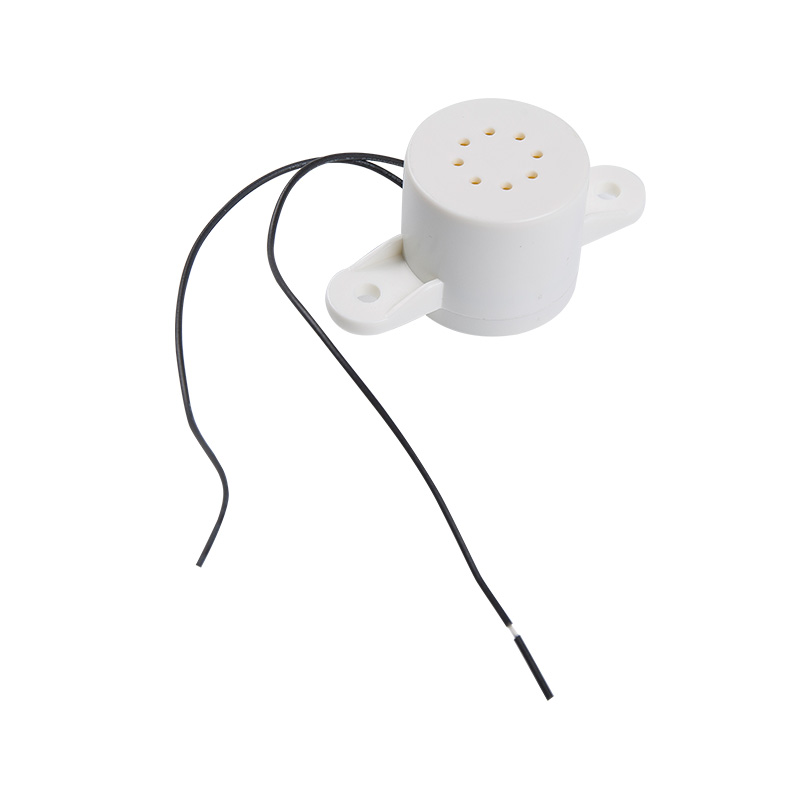Piezo buzzers and electromagnetic buzzers are both widely used in battery-powered applications, but their performance characteristics differ significantly due to their operating principles. Here’s a detailed comparison of their advantages and limitations when used in battery-powered devices.
Advantages of Piezo Buzzers
1. Lower Power Consumption
-
Efficiency: Piezo buzzers consume significantly less power than electromagnetic buzzers because they require very little current to generate sound.
-
Voltage Flexibility: They can operate at a wide range of voltages (3V to 250V), making them suitable for low-power battery applications.
-
Lower Current Draw: While electromagnetic buzzers require higher current due to their coil-driven mechanism, piezo buzzers operate with lower current, reducing battery drain.
2. Higher Sound Output (SPL) at Low Power
-
Efficiency in Acoustic Conversion: Piezo buzzers can produce a high sound pressure level (SPL) even with minimal power, making them ideal for alarms and notifications in battery-operated devices.
-
Louder at Equivalent Power: At the same power input, piezo buzzers are generally louder than electromagnetic buzzers.
3. Longer Operational Lifespan
-
No Moving Parts: Unlike electromagnetic buzzers, which use a diaphragm and coil mechanism that wears out over time, piezo buzzers rely on the deformation of a ceramic element, leading to longer life.
-
More Reliable in Harsh Environments: They are less prone to degradation from mechanical wear, vibrations, or dust accumulation.
4. Compact and Lightweight Design
-
Smaller Form Factor: Since piezo buzzers don’t require a magnet and coil, they can be designed to be thinner and lighter, making them suitable for compact battery-operated devices.
-
Less Heat Generation: They operate without significant heat dissipation, which is crucial for enclosed, battery-powered systems.
5. Wide Frequency Range
-
More Flexible Frequency Design: Piezo buzzers can be designed to operate over a wider frequency range (typically 2kHz–20kHz), which makes them more versatile for different applications, from simple beeps to complex tonal alerts.

Limitations of Piezo Buzzers
1. Requires Higher Driving Voltage
-
Higher Voltage Requirement: Piezo buzzers typically require a higher voltage (e.g., 12V, 24V, or more) compared to electromagnetic buzzers, which can operate effectively at 1.5V–12V.
-
Additional Driver Circuitry Needed: Many piezo buzzers need a step-up voltage circuit (such as a boost converter) to operate efficiently in low-voltage battery-powered applications.
2. Limited Low-Frequency Performance
-
Weak Bass Response: Piezo buzzers are less effective at producing lower frequencies (<2kHz) because their diaphragm movement is more limited than electromagnetic buzzers.
-
Less Suitable for Audio Applications: If an application requires rich, deep tones (e.g., voice output or musical notes), electromagnetic buzzers may be preferred.
3. Directional Sound Output
-
Narrower Sound Dispersion: Piezo buzzers tend to have a more directional sound pattern, meaning they need to be positioned carefully in a device to ensure effective sound propagation.
-
Less Omnidirectional Sound Projection: This can be a disadvantage in applications where sound needs to be evenly distributed across a space.
4. Higher Impedance
-
Requires Matching Circuitry: Due to their high electrical impedance, piezo buzzers often require additional impedance-matching components in the driving circuit for optimal performance.
Comparison Summary: Piezo vs. Electromagnetic Buzzers in Battery Applications
| Feature | Piezo Buzzer | Electromagnetic Buzzer |
|---|---|---|
| Power Consumption | Lower (better for battery life) | Higher (draws more current) |
| Operating Voltage | Higher (often needs a boost circuit) | Lower (works well at 1.5V–12V) |
| Sound Output (SPL) | Higher at low power | Moderate, but lower efficiency |
| Lifespan | Longer (no moving parts) | Shorter (mechanical wear) |
| Size and Weight | More compact and lightweight | Typically bulkier |
| Frequency Range | Wider (2kHz–20kHz) | Narrower (typically below 5kHz) |
| Low-Frequency Performance | Poor (weak bass response) | Better (deeper tones possible) |
| Sound Dispersion | More directional | More omnidirectional |
| Suitability for Battery-Powered Devices | Better for alarms, beeps, and high-frequency alerts | Better for low-frequency audio signals |


 EN
EN  English
English Deutsch
Deutsch 中文简体
中文简体
